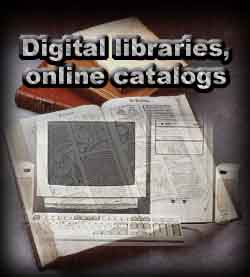Shortly after the deployment of online catalogs in a handful of libraries, I was one of several researchers who studied online catalog use and users in the Council on Library Resources-sponsored Nationwide Online Catalog Survey.
My analysis of surveys, focused-group intrviews, and transaction logs led to the publication of my first book, Subject Searching in Library Catalogs.

However, the same problems that the first online catalog users encountered plague digital library users--large retrievals, finding the right search terms, selecting the right subject searching approach, and targeting the most appropriate source for their information needs.
By the early 1990s, the field's interest turned to digital libraries and the library of the future. My predictions about the library of the future are now more than a half decade old but you can read and evaluate them for yourself.
Currently, my research focuses on how digital library users select the right source to answer their questions. I am not entirely convinced that the solution to this vexing problem lies in automatic selection approaches. I believe that machines must partner with humans in source selection.

C o n t e nts Q u i c k Bio S u b j e c t Headings C l a s s i fication S e a r c h Strategies D i g i t a l Libraries V i s u a l Images
